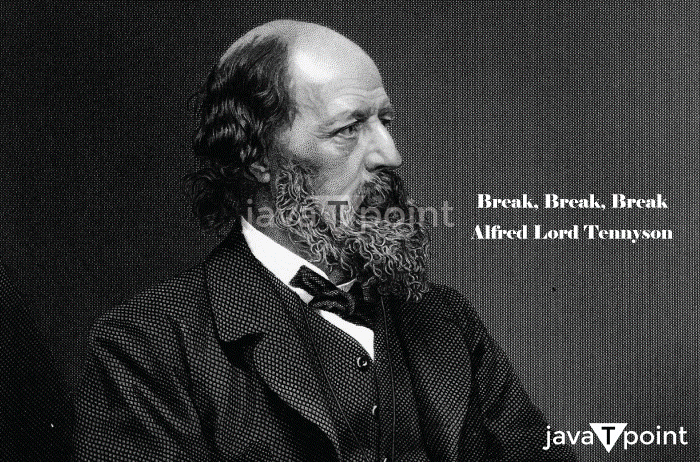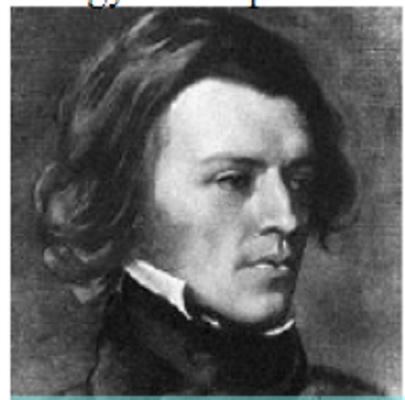Break, Break, Break Poem Summary and AnalysisStructure of Break, Break, BreakBreak, Break, Break poem was written by Alfred Lord Tennyson. It is a poem that has 4 stanza which are separated into set of 4 lines known as Quatrains. In Quatrains, we do not get to see a strict rhyme scheme, but there we will find certain examples of rhymes like "sea" and "me" in the first stanza. There are a number of patterns in the meter that alter throughout the poem. There are other lines with syllables in this poem, but you will also see instances of trimeter when the emphasis shift places. 
Now let us understand the poem Break, Break, Break Stanza wise- Stanza Number One"Break, break, break, On thy cold gray stones, O Sea! And I would that my tongue could utter The thoughts that arise in me." Explanation to these Lines: In the first para of the poem Break, Break, Break written by Alford, the poet begins by talking to the beautiful waves. The technique that the poet use is known as "anaphora." In this stanza, we get to know that the poet is talking directly to the sea who is not responding to it. The speaker anyhow continues to encourage the powerful sea to break against the "cold gray stones" that are present on the shore. The emotion that is depicted in this para showcases the gloomy power that transfers the emotional state that the poet is facing at that time.
Stanza Number 2"O, well for the fisherman's boy, That he shouts with his sister at play! O, well for the sailor lad, That he sings in his boat on the bay!" Explanation to these Lines: In the second stanza the technique which has been used by the poet is the "anaphora-" a technique which we get to know through the writing. We get to know this through the example "O, well for the-" this line has been used repeatedly by the poet which is a technique known as the anaphora. Through this para we get to know that the poet has experienced different phrases that he sees around himself. The first one is the" fisherman's boy" who is with his sister and the second one is that the "sailor lad," and all these are experiencing see in their own different manners. In this para we also get to see the good examples of juxtaposition, especially in the case of the young man who is singing on the way. The young man is able to find joy in his life and his able to express his emotions freely. Stanza Number 3"And the stately ships go on To their haven under the hill; But O for the touch of a vanish'd hand, And the sound of a voicethat is still!" Explanation to these lines: In the 3rd stanza of the poem, the speaker takes a light note of stately ships that are sailing off into the certain distance. He is also looking at this sea differently as compared to his own emotions. He hopes that they are going to a new land somewhere the sorrow that they might have in their personal lives cannot touch them. But, the lovely site of these ships does not keep the speakers mind occupied for very now. He very quickly come back to his own thoughts which he depicted in the line experiencing of touching a "vanish'd hand." In this line, we get to see that the author might be thinking of the hand of Author Hallam who is his deceased friend. He misses the voice of his friend, which actually comes in his mind. We get to know through these lines that whatever this speaker does he cannot escape the memories of the person he lost. Stands Number 4"Break, break, break At the foot of thy crags, O Sea! But the tender grace of a day that is dead Will never come back to me." Explanation to this Stanza: The 4th stanza of the poem begins with the repetition of the line Break, Break, Break which is also stated in the starting of the poem. Through these lines, the poet tells the waves again to break the against the shore at the "foot of thy crags." It has to be noted that in the last sentence, the poet uses the exclamation mark to emphasize his passion. Despite the power of the waves, the damage that is caused by them, or the site that he sees around him he can't get back to the grace of a day that happened before his friend left the world. Through these lines, we get to know that the things are different now and that time will never come back to the poet. Overall Summary of the Poem
The theme of the poem describes the feeling of loss spoken by the man who is standing by the rocky seashore to express his emotions. This poem has a strong bibliographical connection that contains Tennyson's feeling of nostalgia, and emotions which are missing his friend. Tennyson has not only written this poem to express his emotions, but he has also written poem named as "Thones & Ulysses." All the sufferings that are mentioned in all his poems are same, all these poems depict the same emotion of losing his friend Hallam and this longing is also put forward in his 3rd stanza of deep poem Break, Break, Break. Break, Break, Break can be classified as an "Sley" about Tennyson's feeling towards his friend Hallam. Like other poems of him, written an year before, all the poems use a very simple style and describe a scene in minimalist terms of missing his friend and the previous time of childhood that they have spent together. In several of his poems, Tennyson uses a myth to illustrate the theme of the poem. However, the technique and other decorative aspects are also being seen in the poem Break, Break, Break. This factor distinguishes the poem from the other poems that are written by him around the same time like Thones & Ulysses. In 1992, Michael Thorn responded to the poem in a critical manner using Tennyson's life. According to Michael Thorne, this poem is frequently anthologized and is the ideal illustration of how biography may be utilised to breathe new life into a piece that has been repeated and is well-known. The choked poet can be seen glaring resentfully at the happy fisherman's child, the equally happy sailor, and the ships at sea when the bibliographical context is known. It is a fantastic short song says Michael. Critical Analysis of the PoemBreak, Break, Break is an excellent play on the comparison that the poet describes between the life and the sea. The poem expresses the inventible phenomenon of death that is tangled with the waves of the sea and the feeling of the poet will be well observed in this poem. The poem gained a lot of appreciation in the Victorian Era as it is one of the most well written poem that has an abstract framework of writing. It also describes life as a physical entity and introspecting on one's feeling based on observation and comparison. This poem is all about how a poet expresses his feeling towards the loss of his friend Hallam and dedicate this and other poems to his friend.
Next TopicCan't Hurt Me Summary
|
 For Videos Join Our Youtube Channel: Join Now
For Videos Join Our Youtube Channel: Join Now
Feedback
- Send your Feedback to [email protected]
Help Others, Please Share









